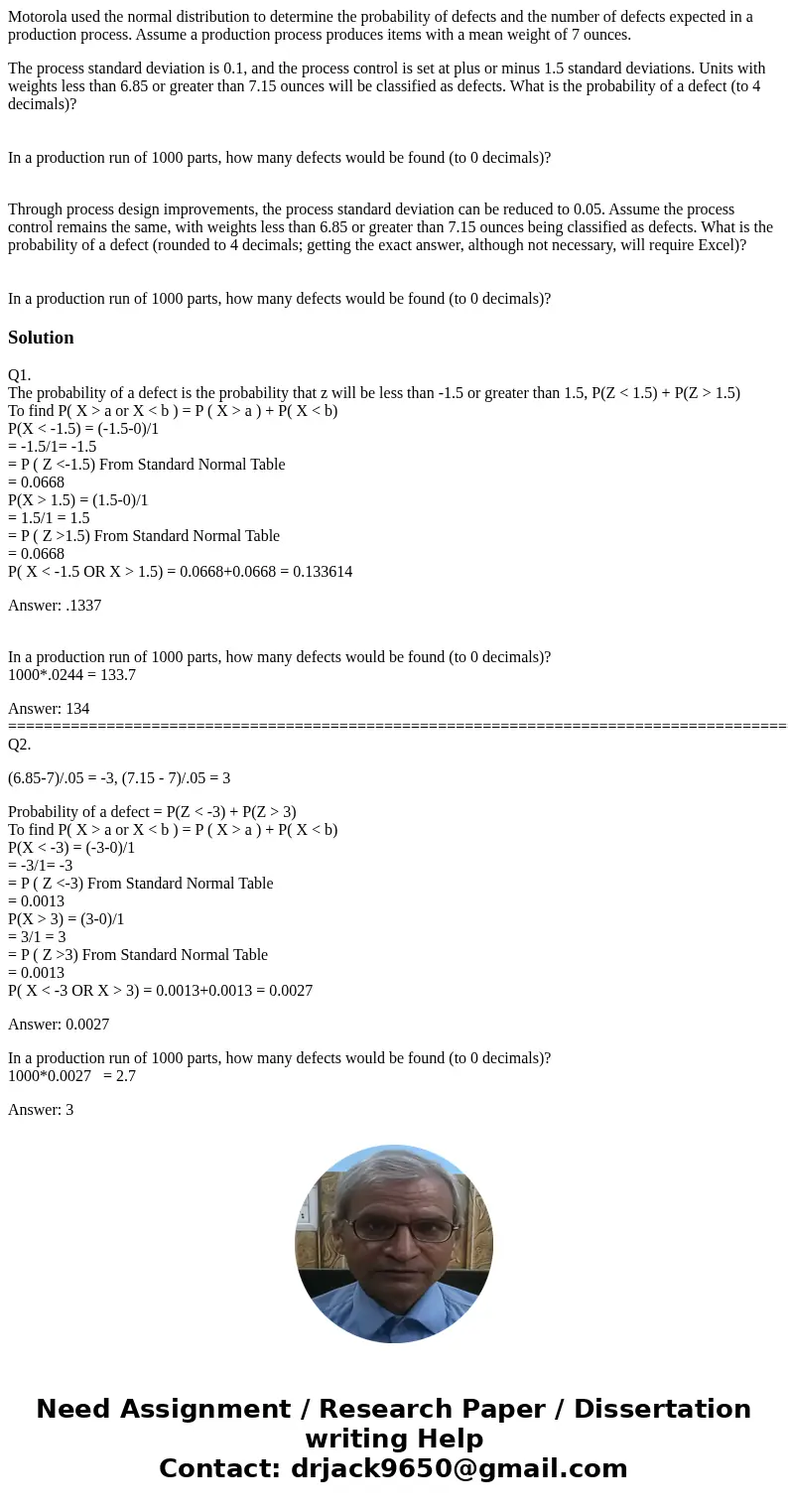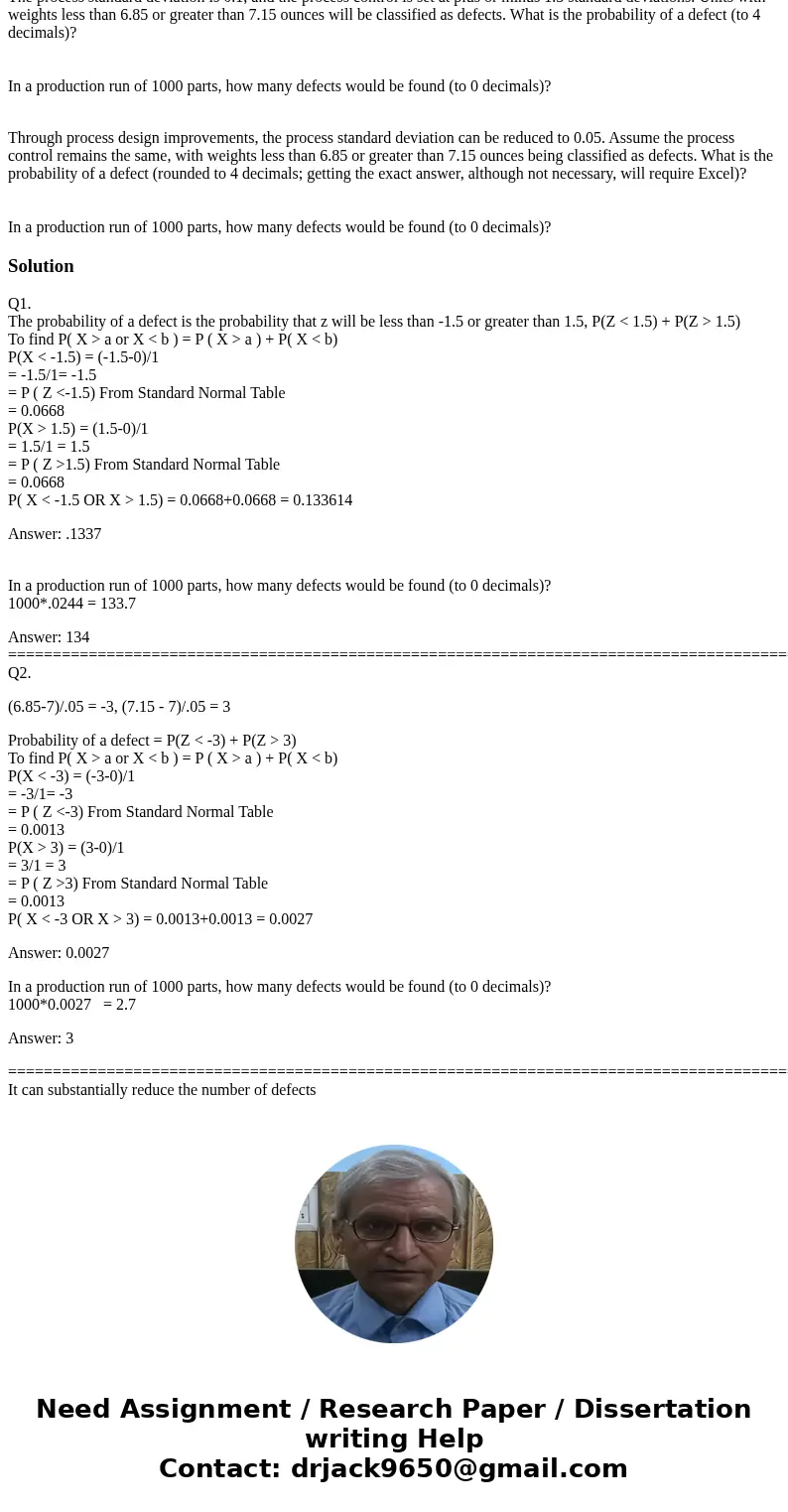Motorola used the normal distribution to determine the proba
Motorola used the normal distribution to determine the probability of defects and the number of defects expected in a production process. Assume a production process produces items with a mean weight of 7 ounces.
The process standard deviation is 0.1, and the process control is set at plus or minus 1.5 standard deviations. Units with weights less than 6.85 or greater than 7.15 ounces will be classified as defects. What is the probability of a defect (to 4 decimals)?
In a production run of 1000 parts, how many defects would be found (to 0 decimals)?
Through process design improvements, the process standard deviation can be reduced to 0.05. Assume the process control remains the same, with weights less than 6.85 or greater than 7.15 ounces being classified as defects. What is the probability of a defect (rounded to 4 decimals; getting the exact answer, although not necessary, will require Excel)?
In a production run of 1000 parts, how many defects would be found (to 0 decimals)?
Solution
Q1.
The probability of a defect is the probability that z will be less than -1.5 or greater than 1.5, P(Z < 1.5) + P(Z > 1.5)
To find P( X > a or X < b ) = P ( X > a ) + P( X < b)
P(X < -1.5) = (-1.5-0)/1
= -1.5/1= -1.5
= P ( Z <-1.5) From Standard Normal Table
= 0.0668
P(X > 1.5) = (1.5-0)/1
= 1.5/1 = 1.5
= P ( Z >1.5) From Standard Normal Table
= 0.0668
P( X < -1.5 OR X > 1.5) = 0.0668+0.0668 = 0.133614
Answer: .1337
In a production run of 1000 parts, how many defects would be found (to 0 decimals)?
1000*.0244 = 133.7
Answer: 134
======================================================================================================
Q2.
(6.85-7)/.05 = -3, (7.15 - 7)/.05 = 3
Probability of a defect = P(Z < -3) + P(Z > 3)
To find P( X > a or X < b ) = P ( X > a ) + P( X < b)
P(X < -3) = (-3-0)/1
= -3/1= -3
= P ( Z <-3) From Standard Normal Table
= 0.0013
P(X > 3) = (3-0)/1
= 3/1 = 3
= P ( Z >3) From Standard Normal Table
= 0.0013
P( X < -3 OR X > 3) = 0.0013+0.0013 = 0.0027
Answer: 0.0027
In a production run of 1000 parts, how many defects would be found (to 0 decimals)?
1000*0.0027 = 2.7
Answer: 3
======================================================================================================
It can substantially reduce the number of defects


 Homework Sourse
Homework Sourse